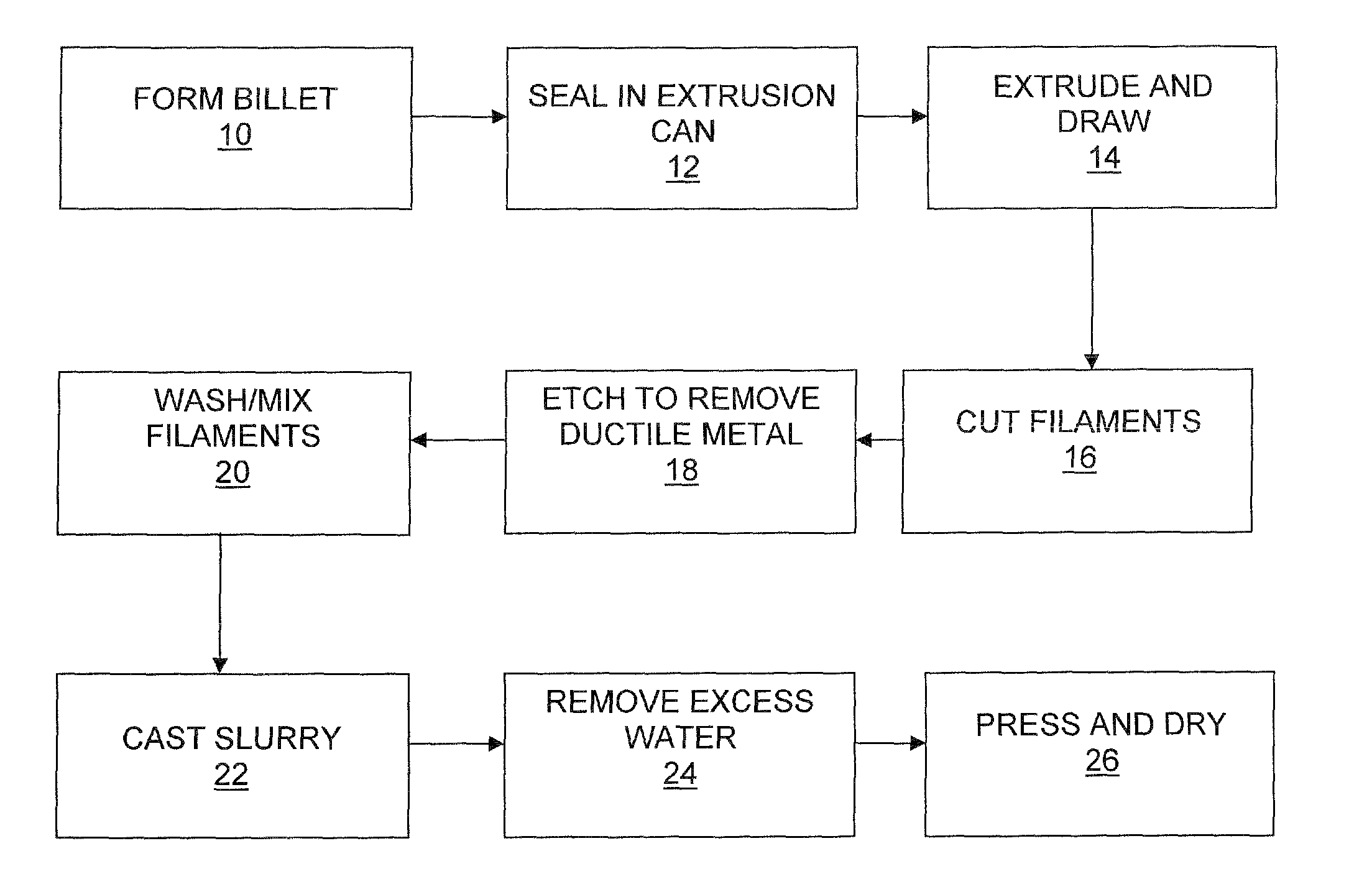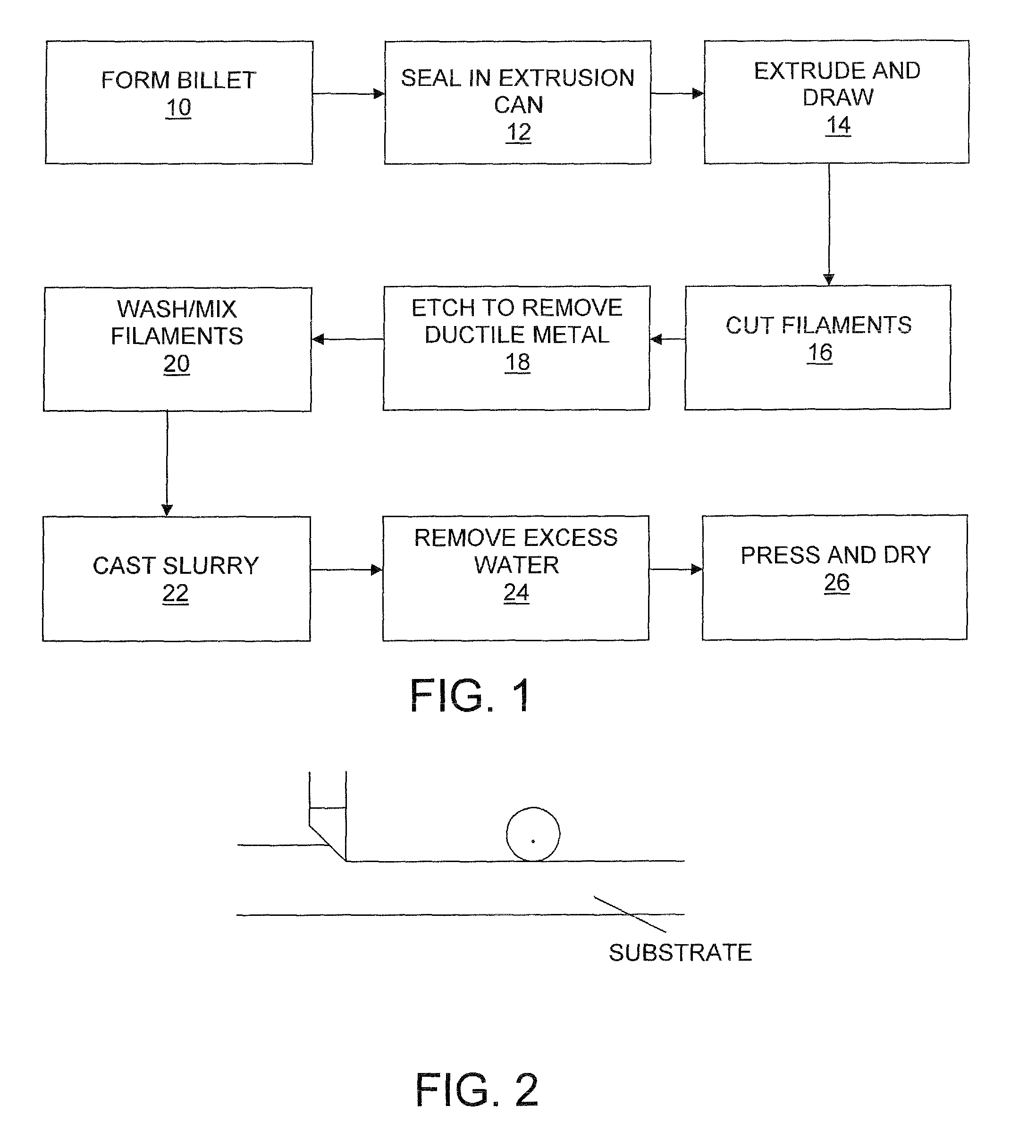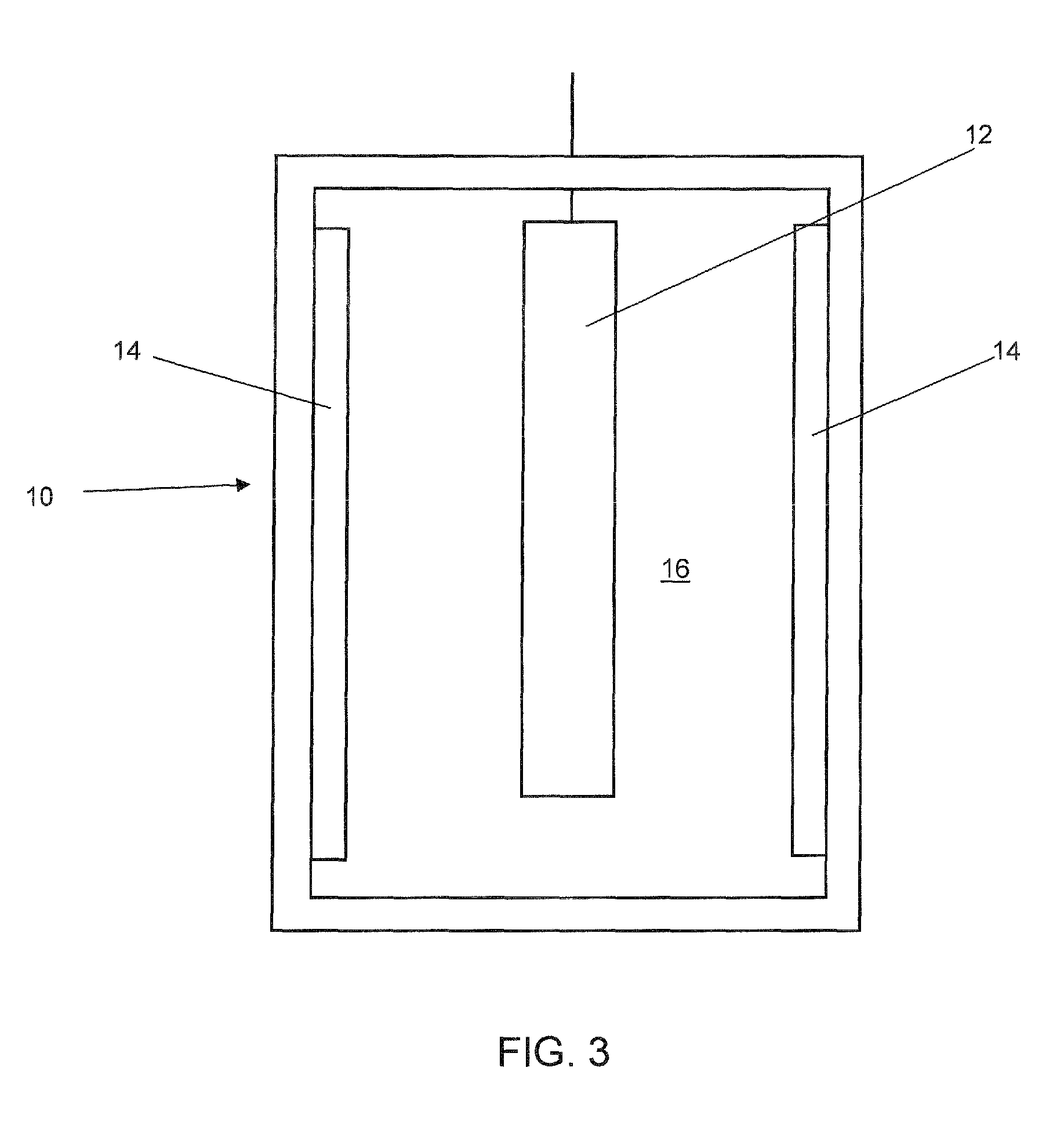Wet electrolytic capacitor and method for fabricating of improved electrolytic capacitor cathode
a technology of electrolytic capacitors and wet electrolytic capacitors, which is applied in the direction of electrolytic capacitors, capacitors, transportation and packaging, etc., can solve the problems of increased manufacturing costs, limited packaging of capacitors, and serious drawbacks of powders and flakes used in capacitors
- Summary
- Abstract
- Description
- Claims
- Application Information
AI Technical Summary
Benefits of technology
Problems solved by technology
Method used
Image
Examples
Embodiment Construction
[0028]Referring to FIGS. 1 and 2, the process starts with the fabrication of valve metal filaments, preferably tantalum, by combining filaments or wires of tantalum with a ductile material, such as copper to form a billet at step 10. The billet is then sealed in an extrusion can in step 12, and extruded and drawn in step 14 following the teachings of my '196 U.S. patent. The extruded and drawn filaments are then cut or chopped into short segments, typically 1 / 16th-¼th inch long at a chopping station 16. Preferably the cut filaments all have approximately the same length. Actually, the more uniform the filament, the better. The chopped filaments are then passed to an etching station 18 where the ductile metal is leached away using a suitable acid. For example, where copper is the ductile metal, the etchant may comprise nitric acid.
[0029]Etching in acid removes the copper from between the tantalum filaments. After etching, one is left with a plurality of short filaments of tantalum. T...
PUM
| Property | Measurement | Unit |
|---|---|---|
| temperature | aaaaa | aaaaa |
| temperatures | aaaaa | aaaaa |
| voltages | aaaaa | aaaaa |
Abstract
Description
Claims
Application Information
 Login to View More
Login to View More - R&D
- Intellectual Property
- Life Sciences
- Materials
- Tech Scout
- Unparalleled Data Quality
- Higher Quality Content
- 60% Fewer Hallucinations
Browse by: Latest US Patents, China's latest patents, Technical Efficacy Thesaurus, Application Domain, Technology Topic, Popular Technical Reports.
© 2025 PatSnap. All rights reserved.Legal|Privacy policy|Modern Slavery Act Transparency Statement|Sitemap|About US| Contact US: help@patsnap.com



